In Coffee Part 1 blog we learned nutrition and health benefits of coffee. At my table with coffee in hand, let’s learn how to roast your own coffee and methods of brews for a great cup of coffee. One cup at a time.
If you missed the first blog on Coffee here is the link: Coffee Around My Table part one health benefits.
Roasting coffee could be your new hobby. If roasting your own coffee sounds like work then read on so you can appreciate what is done for you before you buy the coffee. You will learn to buy quality roasted beans. Buy your roasted coffee beans fresh, often and local and appreciate a great cup of coffee.

Buy quality green coffee beans.
First, you want to get quality green beans to roast. My husband orders his online from a couple places. He orders his coffee beans from Theta Ridge Coffee in Indiana and Burman Coffee in Wisconsin. Make sure they have a fresh supply of green beans.
Green coffee beans are good for a year, so you can order six months to a years’ worth at a time. Coffee beans are harvested certain times of the year in different parts of the world. The nice part is you can roast your coffee whenever you want and its always fresh. My husband roasts ¼ pound to 1/2 pound at a time.
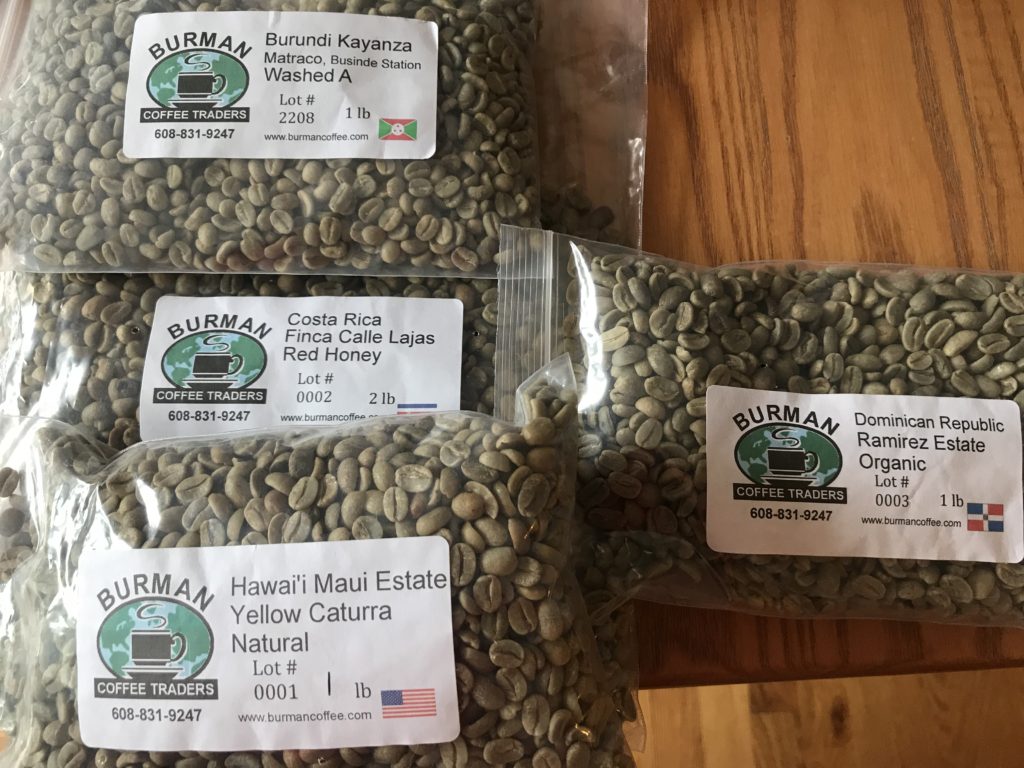
Coffee Roasters
When my husband first started to roast coffee, he experimented with roasting with an old air popcorn popper. He had to keep track of the timing and temperatures. He added a thermometer onto his popper to roast coffee. You can find videos on roasting coffee with a hot air popper.
He realized this was something he enjoyed and wanted to roast more than ¼ pound at a time, so he invested in a small home roaster so he could roast once every 14 days.
He purchased his roaster online after researching them all. He decided to by the Gene Café. Another roaster he was considering was the Behmor. He decided on the Gene Cafe because he could vent the hot air outside when he had to roast inside, ease of clean up and he could visually watch the roasting.
Commercial roasters usually can roast 20-50 pounds of coffee at a time and use gas instead of electricity.
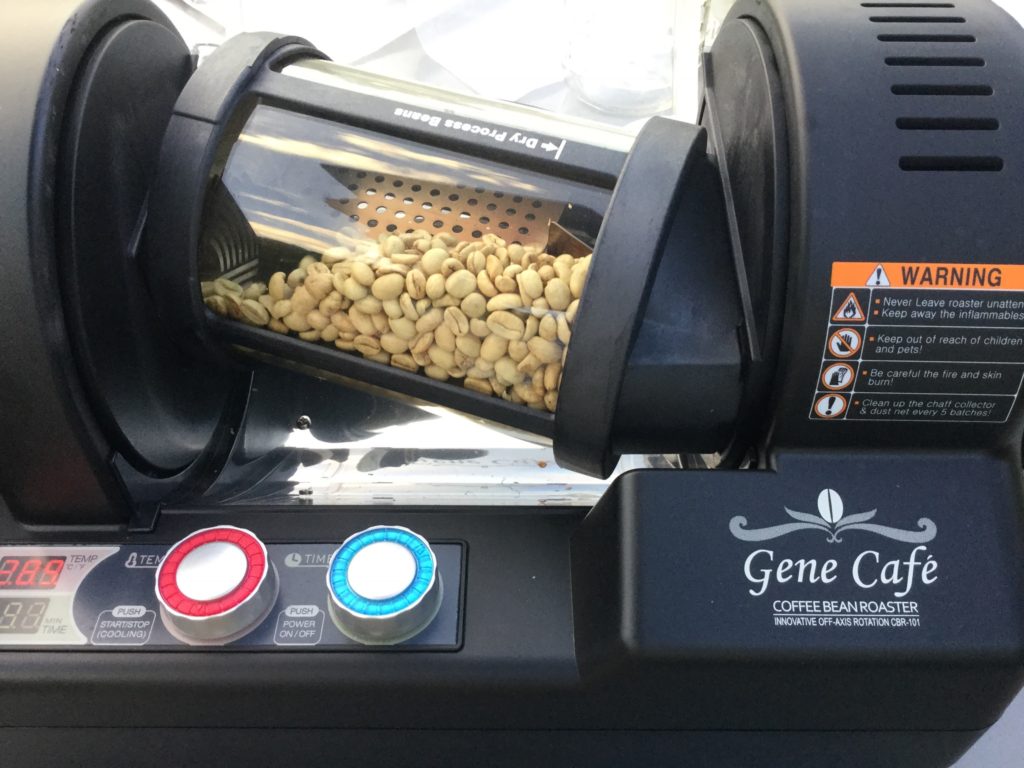
Coffee and Taste- One Cup at a Time
When you get your beans and roast them, you will be able to taste where they are from. For example, the beans from Africa tend to taste like citrus fruit or lemony in nature because they are grown near a citric environment. Each coffee picks up the tastes from its environment and growing conditions such as climate and altitude.
Many people simply don’t care about coffee and just drink it. The super-tasters of coffee can taste the subtle tastes in each cup from beginning to end. You may be like grandpa who likes the store-bought canned type or my husband who likes to enjoy each unique cup of coffee. I will drink either but can taste a good quality cup of coffee.
These are some green coffee beans he orders and notes he made on how they taste after they are roasted and made into a cup of coffee. These have been roasted to Medium Roast.
Favorites and Flavors
Hawaiian- Smooth complex taste, great balance with cocoa and earthiness in flavor. (This is one of my favorites.)
Rwanda- Smooth black tea like taste.
Indonesian Bali- Dark and bold with tasty earth tones, not bitter or acidic.
Ethiopian– Bright and flavorful without bitterness, nice mouthfeel with some citrus.
Papa New Guinea- Nice nutty flavor with no bitterness, clean cup with low acidity.
Sumatra– Bold earthy taste, complex and deep flavor with a pleasant finish.
Honduran- Smooth and balanced from start to finish with sweet caramel and light citrus notes.
Kenyan Pea Berry– Strong citrus up front with a smoky flavor, medium body with clean finish.
Panama-Strong start and finishes with smooth chocolate creaminess.
Brazil- Mellow with no bitterness, good body, balanced and smooth.
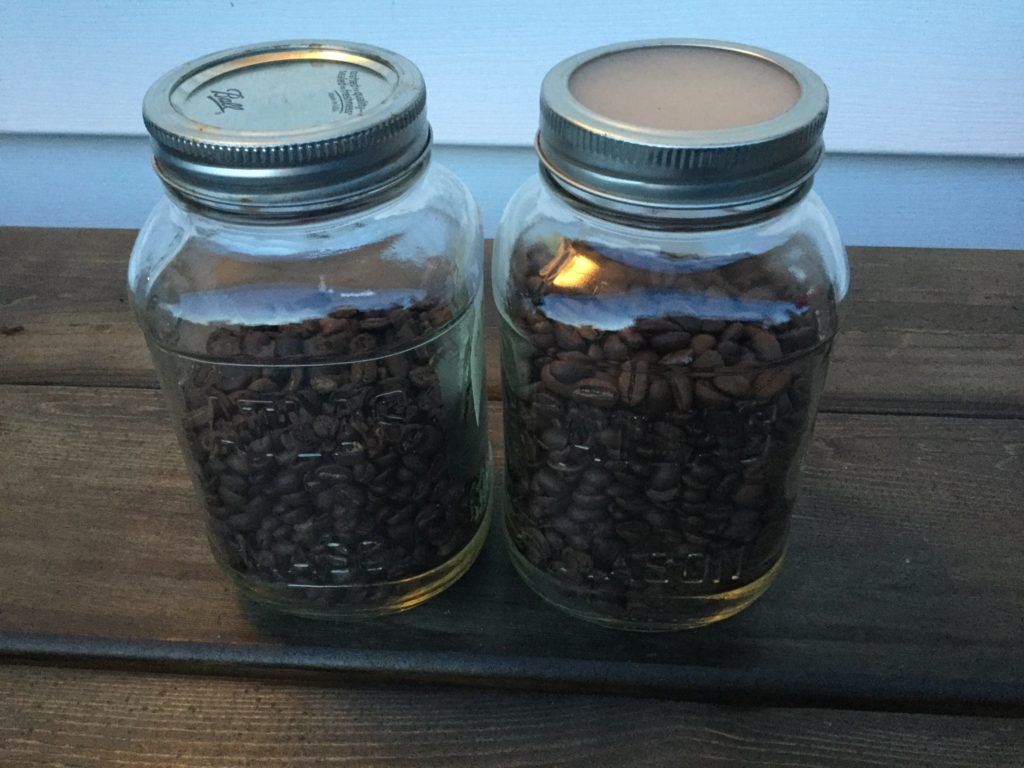
Roasting Levels
Coffee is roasted in three levels. Light, Medium and Dark are the terms the consumer is used too. Light is roasted less in time than the Dark roast.
When you are roasting coffee you will see terms like city, city plus and full city roast or 1st Crack and 2nd Crack. The crack is the coffee beans expanding like popcorn. Below is how these terms correspond to each other.
- Light Roast: city roast- 1st Crack
- Medium Roast: city plus roast
- Dark Roast: full city roast- 2nd Crack
It takes 9-15 minutes to roast coffee. Coffee is roasted at 450-470 degrees and rotated through a drum and or hot air. At the desired roast level it is immediately cooled and needs to rest to out-gas.
Many people tell me your house must smell so good when roasting coffee. I think it smells like burnt toast. As you are roasting the coffee the chaff from the beans comes off and smells burnt.
The outgassing needs to be released in the first 24 hours or longer. That is why there is a valve on the coffee bags. The real coffee taste does not come through until 24 hours later when you open up the jar or bag it is stored in.
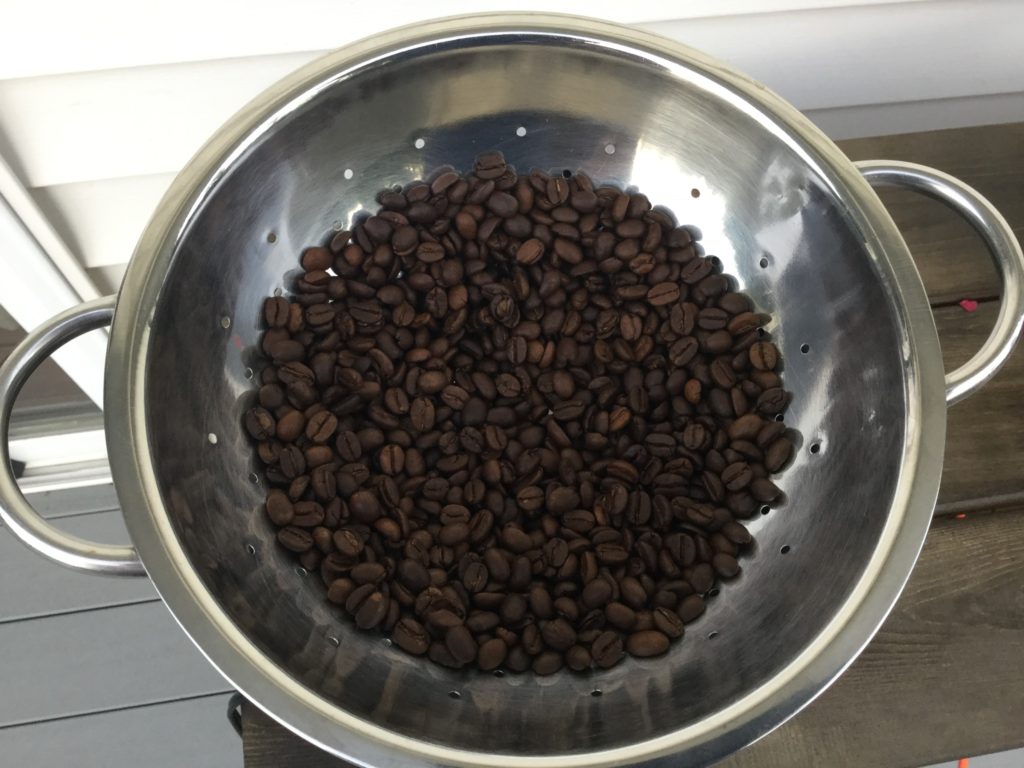
Brewing Coffee
The most important thing for brewing coffee is:
- Quality and temperature of the water.
- Quality and freshness of coffee beans
- The grind consistency.
You can buy your coffee pre-ground, but then your coffee loses some of its freshness. It is preferred to grind your own beans to get the freshest coffee.
If you want to control your grind you need to get a manual or electric ceramic “Bur” grinder. The grinder my husband has chosen is for home use. It is made by “Handground”. He likes it because the grinding motion is manual and easy, it has easy adjustment to size of grounds and it looks good.

Methods of Brewing
Coffee Brewing ratio- water to coffee: Depends on brewing methods and tastes.
Aero press: Tube that makes concentrated coffee that you can dilute to your tastes. You can use paper or metal filters with this. This uses a finer grind coffee.
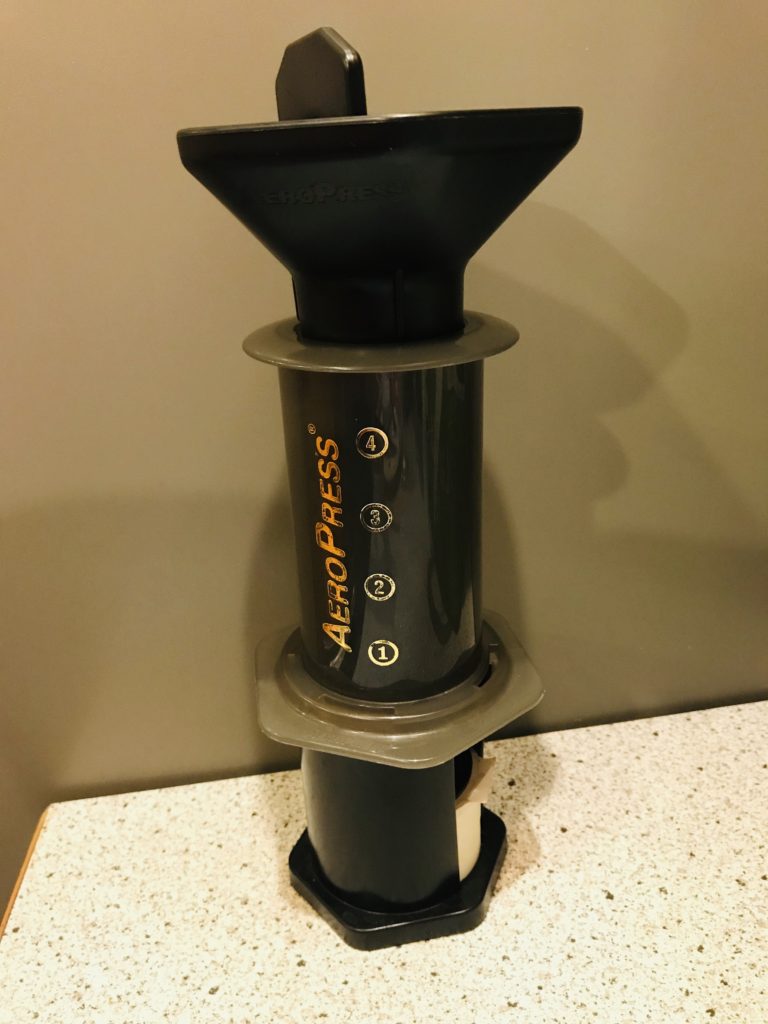
French press: More common and uses a course grind. Coffee is pressed down after brewing in water 4-5 minutes.
Pour over: Uses a paper filter. You Bloom coffee which is pouring some water on top of coffee so it expands. The coffee is wet. Then you wash the flavor of coffee through in a circular motion as you slowly pour the water over the coffee. This should take 4 minutes. Most flavor out of coffee comes from this method. Some brands are Chemex and Hairo.

Drip coffee makers: Very common in regular counter coffee pots.
Cold Brew: Coffee sits in cold water on the counter or refrigerator for 12-24 hours then taken out of the water to make cold brew. You can use a French press for this method too.
I recently watched a video on coffee tasting and the best way to take in the flavor of coffee is to slurp it. So next time you slurp your coffee you are getting in all the flavors and aromas.
If you are in love with coffee then you can learn more at coffee schools and online videos. You can learn how to roast or make a delicious cup of coffee.
There is a science to all of this and there are people who have jobs as coffee tasters, roasters and buyers. The art of tasting one cup after another. Now wouldn’t that be a dream job?
Enjoy a great cup of coffee. One slurp and one cup at a time.
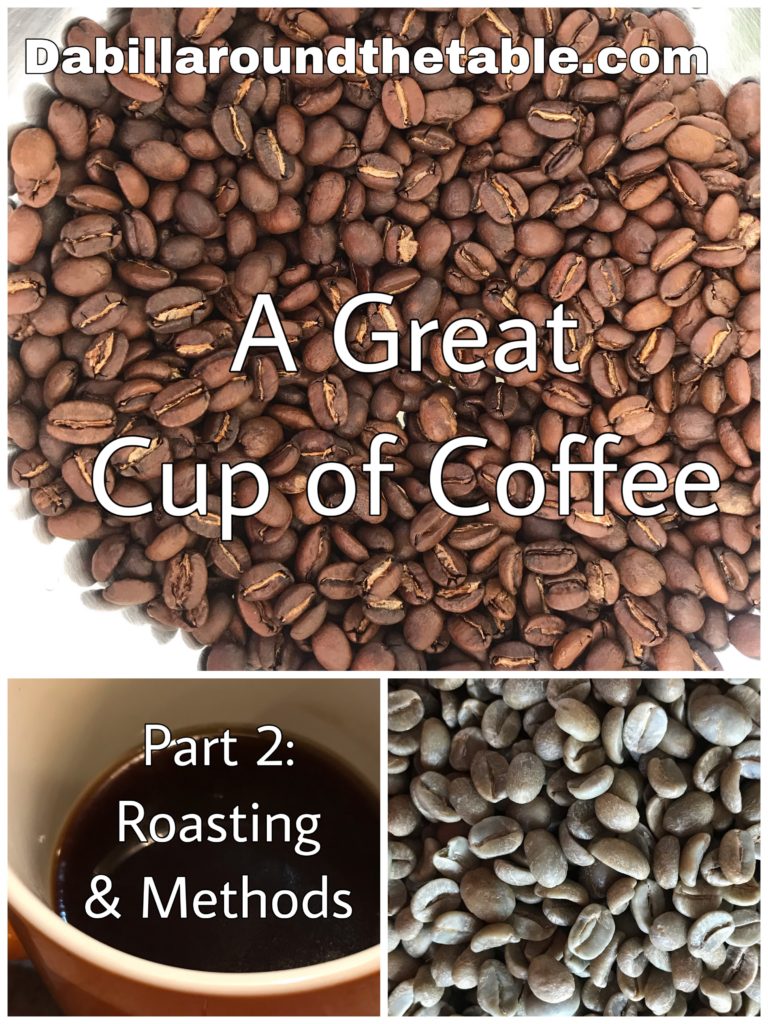
Any Favorite ways you like to make coffee or Roasts your prefer?
Subscribe to dabillaroundthetable Email and get monthly updates on blogs.




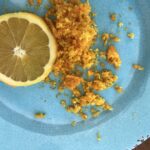


Heavens….I just drink coffee! I should probably taste it more!
It is amazing when you start trying different roasts and types. 😀